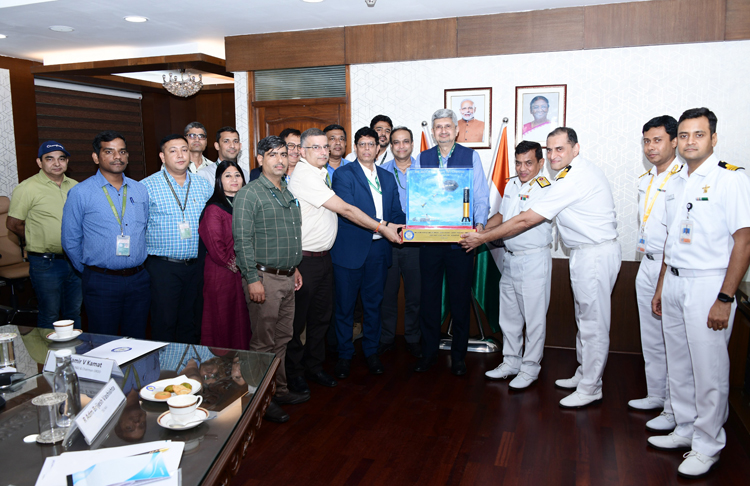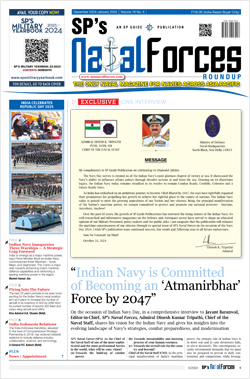INDIAN ARMED FORCES CHIEFS ON OUR RELENTLESS AND FOCUSED PUBLISHING EFFORTS

The insightful articles, inspiring narrations and analytical perspectives presented by the Editorial Team, establish an alluring connect with the reader. My compliments and best wishes to SP Guide Publications.

"Over the past 60 years, the growth of SP Guide Publications has mirrored the rising stature of Indian Navy. Its well-researched and informative magazines on Defence and Aerospace sector have served to shape an educated opinion of our military personnel, policy makers and the public alike. I wish SP's Publication team continued success, fair winds and following seas in all future endeavour!"

Since, its inception in 1964, SP Guide Publications has consistently demonstrated commitment to high-quality journalism in the aerospace and defence sectors, earning a well-deserved reputation as Asia's largest media house in this domain. I wish SP Guide Publications continued success in its pursuit of excellence.
- MoD initiates comprehensive review of Defence Acquisition Procedure 2020, pushes for defence reforms
- G7: The Swansong
- Kalinga Connect: South Asia to Polynesia
- Advanced MRSAM for India for a greater firepower
- Must Credit DRDO for Operation Sindoor, now what is next for defence R&D?
- Operation Sindoor | Day 2 DGMOs Briefing
- Operation Sindoor: Resolute yet Restrained
DRDO hands over Medium Range-Microwave Obscurant Chaff Rocket to Indian Navy
This niche technology creates a microwave shield around platforms & reduces radar detection

Defence Research and Development Organisation (DRDO) handed over the Medium Range-Microwave Obscurant Chaff Rocket (MR-MOCR) to the Indian Navy at a ceremony held in New Delhi on June 26, 2024. Microwave Obscurant Chaff (MOC), a niche technology developed by DRDO's Defence Laboratory, Jodhpur, obscures radar signals and creates a microwave shield around platforms and assets, thus reducing radar detection.
Special type of fibres, with diameter of few microns and unique microwave obscuration properties, have been assembled in the medium range chaff rocket. The rocket, when fired, forms microwave obscurant cloud in space spreading over a sufficient area, with adequate persistence time, thus creating an effective shield against hostile threats having Radio Frequency seekers.
The Phase-I trials of MR-MOCR were successfully conducted from Indian Navy ships, demonstrating the MOC cloud blooming and being persistent in space. In Phase-II trials, the Radar Cross Section (RCS) reduction of an aerial target to the extent of 90 per cent has been demonstrated and cleared by the Indian Navy. The number of MR-MOCR, meeting all the qualification requirements, have been successfully handed over to the Indian Navy.
Defence Minister Rajnath Singh has complimented DRDO and the Indian Navy on the successful development of MR-MOCR. He termed the MOC technology as another step towards achieving Aatmanirbharta in defence.
The MR-MOCR has been handed over by Secretary, Department of Defence R&D and Chairman DRDO Dr Samir V. Kamat to Director General of Naval Armament Inspection, Indian Navy Rear Admiral Brijesh Vashistha. The DRDO Chairman congratulated the Defence Laboratory, Jodhpur team for this significant achievement. The Director General of Naval Armament Inspection, Indian Navy also applauded the efforts of DRDO for indigenously developing this strategically-important technology in a short span of time.





